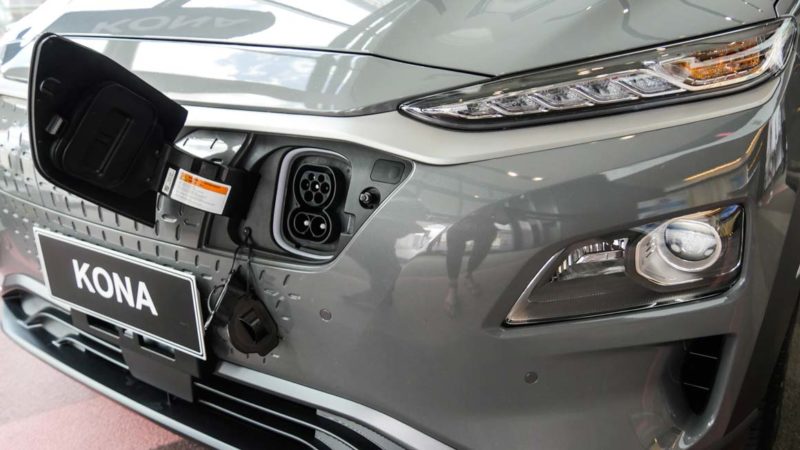Ahead of the release of the all-electric Hyundai Kona Electric in the early months of 2019, a keen Driven reader has shared his experience of what could be the first Australian test drive of the electric SUV.
Solar Analytics’ Brett Bidwell, while attending an electric vehicle festival with mates from the Tesla Owners Club of Australia, was unexpectedly given the chance to take the 64kWh Kona EV for a spin.
Electric cars are right up Brett’s alley, as they dovetail perfectly with his work: collaborating with companies building EV charging infrastructure. As he puts it, Solar Analytics provides a compass by which to guide the transition to clean energy.
“We all know where we want to go, we know how to get there, but we all need to know where we are to begin with,” he tells The Driven.
“Electric vehicles are just part of that, it’s one of the pieces of the energy puzzle.”
As a current driver of a Hyundai Tucson, Bidwell says the Kona EV (which is a compact SUV with 400km real world range) compares well to the Tucson.
Bidwell tells us he started out in eco mode then changed into sports mode.
“It’s certainly got a lot more punch in it than my ICE Tucson,” he said of the Kona EV (conceding it doesn’t pack the performance of the higher spec’d Teslas).
“You certainly wouldn’t need anything more than this for your everyday commute.”
Speaking with The Driven, he confirms what he describes as “quite a comfortable ride”.
“The regen braking is good – it’s a totally different driving technique. When coasting not driving, it acts upon the brakes – you back off and the car will start braking immediately because of loss of momentum,” he says.
Bidwell says the dash controls are pretty much the same as his Tucson ICE, and likes the transparent heads up display that pops up above the dash behind the steering wheel.
Will it convert committed ICE drivers? Bidwell says the reduction in day-to-day running costs will be most likely to attract the fossil fuel crowd.
“I did the comparison between my 2017 Tucson and the Kona,” says Bidwell, whose daily commute from Sydney’s Hills District to the CBD means he travels 40-60,000km a year.
“Discounting [hugely reduced] maintenance costs, the fuel costs (if you are paying for electricity) are 30% of current fuel costs,” he says.
He’s also impressed with the way the South Korean carmaker has configured its assembly lines.
“As an engineer, one of the things that really grabbed me was that they configured the drive system to be similar to the current ICE engine, so it can travel down same production line as ICE vehicles – 90% of the car is the same.”
With the Kona set to be the next electric car to hit the Australian EV market, Bidwell is looking forward to being part of 2019’s developments – at the Solar Analytics office in Redfern, Sydney, he has several prototype EV chargers as well as a single phase Delta 7kW charger that punters can test for free.
“During normal business hours, come in and we’ll stick some electrons in [your EV] for free,” he says.
Editor’s note: Since the publication of this article, The Driven has been informed that the video that originally accompanied this article has been withdrawn.

Bridie Schmidt is associate editor for The Driven, sister site of Renew Economy. She has been writing about electric vehicles since 2018, and has a keen interest in the role that zero-emissions transport has to play in sustainability. She has participated in podcasts such as Download This Show with Marc Fennell and Shirtloads of Science with Karl Kruszelnicki and is co-organiser of the Northern Rivers Electric Vehicle Forum. Bridie also owns a Tesla Model Y and has it available for hire on evee.com.au.

